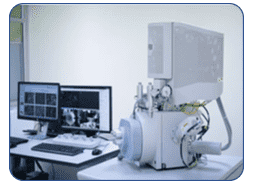Biofilm Fluorescent Labeling Services

Biofilm fluorescent labeling is the process of incorporating fluorescent dyes into biofilms so that they can be visualized by fluorescence imaging. A fluorescent tag is a chemically linked molecule used to help detect biofilms. Typically, fluorescent labels or labels use reactive derivatives of fluorescent molecules called fluorophores. Fluorophores selectively bind to biological membranes and can be chemically or biologically attached. Now, CD BioSciences provides you with a variety of biofilm fluorescent labeling services to meet your scientific research needs.
Our Services
CD BioSciences provides comprehensive services for biofilm fluorescent labeling. Our biofilm fluorescent labeling services mainly use confocal laser scanning microscopy (CLSM) and fluorescence in situ hybridization. You can choose according to your needs.
Biofilm Fluorescent Labeling Approaches We Offer
- Confocal Laser Scanning Microscopy (CLSM)

CD BioSciences visualized biofilms formed on flow cells with transparent surfaces by confocal laser screening microscopy (CLSM). The three-dimensional (3D) morphology and physiology of biofilms can be screened by CLSM. In order to observe biofilms with confocal microscopy and related methods, biofilms must be fluorescent molecules such as green fluorescent protein (GFP), and we can also stain the heterogeneous mass of biofilms with fluorescent or fluorescently labeled dyes. 3D digital images are formed because the fluorescence of biomolecules such as GFP or chlorophyll is either an intrinsic fluorophore or a molecule labeled by an exogenous probe such as a fluorescently labeled antibody detected by a photomultiplier tube. The images we obtained for each layer of the biofilm were combined by computer to create a digital 3D image of the entire biofilm.
- Fluorescent in situ Hybridization (FISH)

Fluorescently labeled microorganisms within biofilms can also be examined by FISH. DNA probes are designed to hybridize to microbial 16S rRNA incorporated into fluorescent dyes (such as FITC or rhodamine) or enzymes (such as horseradish peroxidase). The advantage of a probe that binds to horseradish peroxidase is that it does not destroy microorganisms within the biofilm. The growth rate of microorganisms within a biofilm can be determined by the FISH method because the number of ribosomes present in the microorganism is proportional to the growth activity of the microorganism.
Provided by Clients
Please inform us of your specific biofilm fluorescent labeling services details, and we can provide customized solutions for different projects.
Service Process

Our Features
- CD BioSciences is a leading biofilm technology company offering a trusted suite of services and solutions, especially with our extensive experience in fluorescent labeling of biofilms.
- With our talented people and years of experience, we can fully meet your project requirements and budget in exploring fluorescent markers of biofilms.
Why Choose Us?
As a leading provider of biofilm technology services, CD BioSciences offers powerful, comprehensive solutions for biofilm fluorescent labeling service that will advance your research and provide you with tremendously beneficial options in your future biofilm analysis! We ensure your efficient standard workflow and high-quality data. If you are interested in microbial identification biofilm fluorescent labeling services, please feel free to contact us.
For research use only, not
intended for any clinical use.
Related Services:



